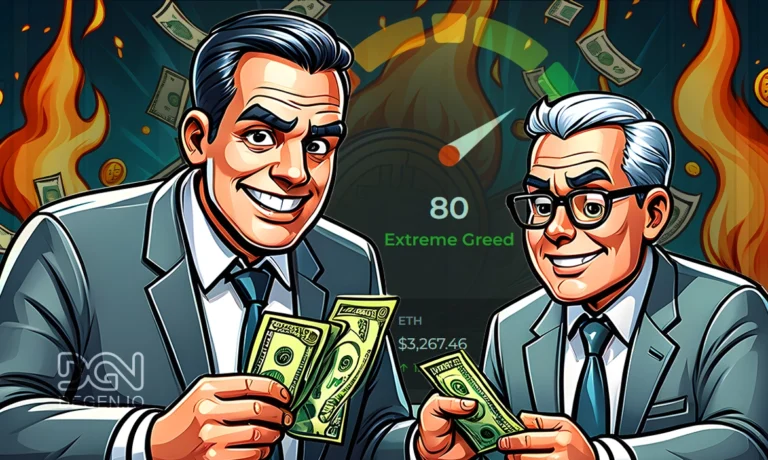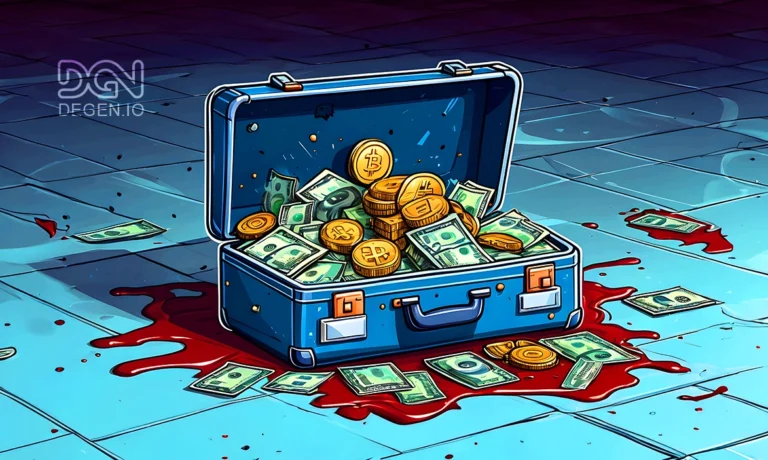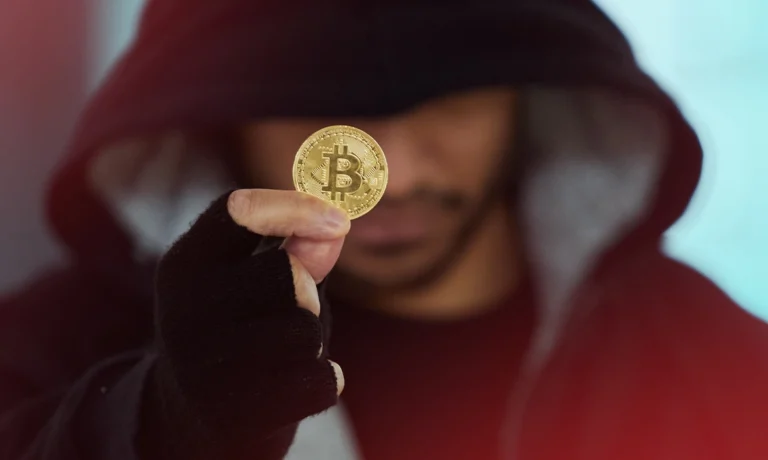The recent explosive rally in Dogecoin’s (DOGE) price has captured the crypto world’s attention, with meme coin enthusiasts eagerly watching for the next token to follow DOGE’s trajectory. According to crypto analyst Unipcs, popularly known as “Bonk Guy,” the next meme coin to potentially experience a similar upswing is FLOKI. Known for accurately predicting Dogecoin’s recent rise past $0.4, Bonk Guy has been vocal on social media about his belief that FLOKI is positioned for a breakout.
In this analysis, we’ll dive into the reasons behind Bonk Guy’s forecast for FLOKI, why BONK and other meme coins might soon rise, and how the broader meme coin trend could continue evolving.
Also read: Bitnomial Sues SEC Over XRP Security Classification
Dogecoin’s Meteoric Rise and Bonk Guy’s Prediction

Dogecoin’s price has surged over the past week, marking a 150% increase that brought the token to a high of $0.4, its best price in recent months. This rally contributed an estimated $40 billion to Dogecoin’s market cap. Bonk Guy, who anticipated this DOGE movement weeks in advance, noted that it followed a distinct chart pattern and suggested that other meme coins might soon mirror this rise.
FLOKI’s Historical Similarity to DOGE Patterns
Bonk Guy’s assertion that FLOKI could be the next meme coin to follow Dogecoin stems from the similarity between the historical price movements of FLOKI and DOGE. FLOKI’s price pattern has often correlated with Dogecoin’s, suggesting that FLOKI might mirror DOGE’s path and eventually witness a sharp increase in value.
Despite its smaller market cap, Bonk Guy pointed out that FLOKI has begun to show the same signs of accumulation and interest among retail and institutional investors that preceded Dogecoin’s recent rally. He believes FLOKI’s relative price stability could lead to an unexpected surge, much like DOGE’s rally, which many investors missed despite the early signals.
Why BONK Could Also See Growth
Another meme coin that Bonk Guy predicts will follow DOGE’s rally is BONK. BONK, a meme coin based on the Solana blockchain, has recently made headlines for being one of the few meme tokens listed on Coinbase. This listing alone has given BONK increased visibility among retail investors, and according to Bonk Guy, the Coinbase effect could lead to broader adoption and price appreciation.
In his recent statements, Bonk Guy also noted that BONK is unique among meme coins in that it has its own Exchange-Traded Product (ETP). This product allows institutional investors to gain exposure to BONK without directly holding the asset, which could lead to greater interest from professional and institutional investors. Additionally, BONK has just broken out of a long-term consolidation period, often a precursor to a significant price movement in technical analysis.
The Coinbase Effect and BONK’s Potential Exposure
Coinbase’s listing of BONK alongside popular tokens like Dogecoin and Shiba Inu has further bolstered Bonk Guy’s belief in its potential. Historically, meme coins tend to gain popularity and liquidity after appearing on major exchanges, especially those like Coinbase, which cater to retail investors. With BONK already on Coinbase and breaking out of a one-year consolidation pattern, it may have the potential to attract both meme coin enthusiasts and institutional investors alike.
FLOKI vs. BONK: Which Meme Coin Holds the Most Potential?
Both FLOKI and BONK have caught the attention of investors looking to capitalize on meme coin momentum, but each coin’s unique characteristics present different growth opportunities:
- FLOKI’s Market Cap and Growth Potential: FLOKI’s relatively low market cap compared to DOGE makes it more susceptible to rapid price changes. Bonk Guy suggested that the lower entry price and untapped retail interest could make FLOKI a better short-term investment for those looking to leverage Dogecoin’s popularity.
- BONK’s Institutional Appeal: The Exchange-Traded Product and Coinbase listing give BONK a slight edge in terms of legitimacy and potential for widespread adoption. Institutional investors may prefer BONK over FLOKI due to its increased accessibility on regulated platforms and products, which provide a level of security and ease of access not typically associated with meme coins.
Key Risks in the Meme Coin Market
While meme coins have seen impressive gains, they also carry substantial risks:
- Market Volatility: Meme coins are notoriously volatile, often driven by social media hype and speculation. While this can lead to substantial gains, it also means that prices can drop just as quickly.
- Lack of Fundamental Value: Unlike some other crypto assets that serve specific use cases, meme coins typically lack underlying utility. This makes them more susceptible to market sentiment, regulatory changes, and shifts in investor attention.
- Regulatory Scrutiny: With increased attention from regulators, meme coins may face future legal restrictions, especially if associated with pump-and-dump schemes. Investors should be prepared for potential regulatory crackdowns that could impact meme coin prices.
Preparing for the Next Meme Coin Rally
Bonk Guy’s predictions for FLOKI and BONK have certainly fueled excitement, but investors should also approach these opportunities cautiously. Crypto traders interested in capitalizing on potential meme coin rallies can consider a few strategies:
- Monitor Social Media Trends: Meme coins often experience rapid growth due to social media influence. Following relevant hashtags, community forums, and influential accounts like Bonk Guy’s can help traders stay ahead of trends.
- Technical Analysis: Look for consolidation patterns and breakouts, which Bonk Guy has emphasized as critical indicators. Using Fibonacci levels, trend lines, and RSI indicators can provide insight into potential entry and exit points.
- Diversified Approach: Given meme coins’ volatility, diversifying investments between coins with stronger fundamentals and meme coins may reduce risk. This allows traders to benefit from potential rallies while maintaining a more balanced portfolio.
Is FLOKI the Next Dogecoin?
While Dogecoin’s rally has left an impression, FLOKI and BONK are rising as potential contenders for the next big move in the meme coin market. Bonk Guy’s accurate predictions for Dogecoin and his confidence in these other meme coins have investors paying close attention. FLOKI’s lower market cap and historical similarity to Dogecoin make it an exciting option, while BONK’s Coinbase listing and institutional appeal make it a unique player in the meme coin space.
However, as with all meme coins, traders should exercise caution and make informed decisions. While the next meme coin rally could yield significant returns, the volatility and lack of inherent value in meme coins underscore the importance of thorough research and risk management. For those interested in the meme coin space, FLOKI and BONK may indeed be the ones to watch, but only time will tell if they can replicate Dogecoin’s success.

















